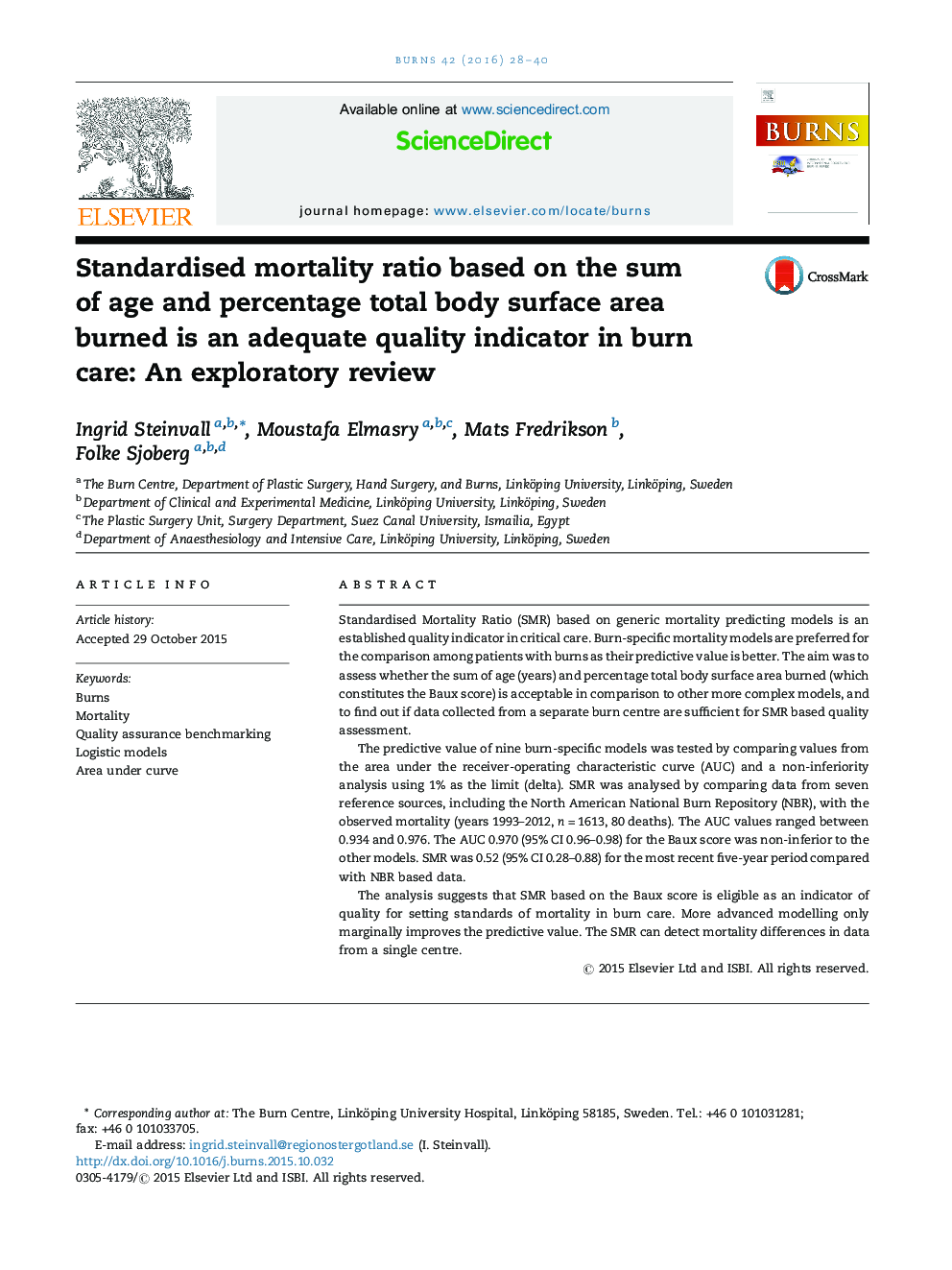| کد مقاله | کد نشریه | سال انتشار | مقاله انگلیسی | نسخه تمام متن |
|---|---|---|---|---|
| 3104169 | 1191644 | 2016 | 13 صفحه PDF | دانلود رایگان |
• Standardised Mortality Ratio (SMR) can be used for benchmarking burn care.
• We have tested the predictive value of nine burn-specific mortality models.
• Adjusting for age extension of burn provides prediction results similar to those given by more sophisticated models.
• Models that predict mortality are not adequate for making clinical decisions about active or palliative burn care.
Standardised Mortality Ratio (SMR) based on generic mortality predicting models is an established quality indicator in critical care. Burn-specific mortality models are preferred for the comparison among patients with burns as their predictive value is better. The aim was to assess whether the sum of age (years) and percentage total body surface area burned (which constitutes the Baux score) is acceptable in comparison to other more complex models, and to find out if data collected from a separate burn centre are sufficient for SMR based quality assessment.The predictive value of nine burn-specific models was tested by comparing values from the area under the receiver-operating characteristic curve (AUC) and a non-inferiority analysis using 1% as the limit (delta). SMR was analysed by comparing data from seven reference sources, including the North American National Burn Repository (NBR), with the observed mortality (years 1993–2012, n = 1613, 80 deaths). The AUC values ranged between 0.934 and 0.976. The AUC 0.970 (95% CI 0.96–0.98) for the Baux score was non-inferior to the other models. SMR was 0.52 (95% CI 0.28–0.88) for the most recent five-year period compared with NBR based data.The analysis suggests that SMR based on the Baux score is eligible as an indicator of quality for setting standards of mortality in burn care. More advanced modelling only marginally improves the predictive value. The SMR can detect mortality differences in data from a single centre.
Journal: Burns - Volume 42, Issue 1, February 2016, Pages 28–40
